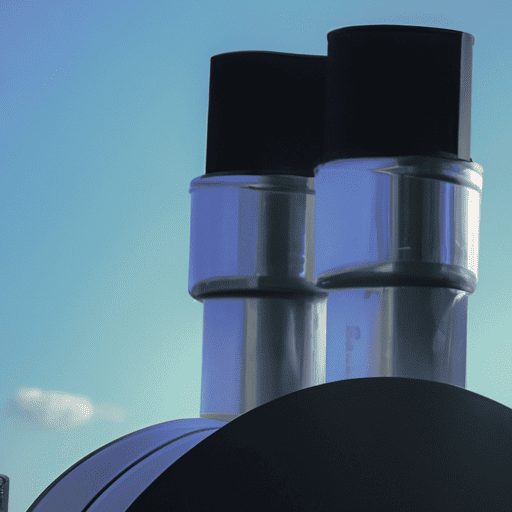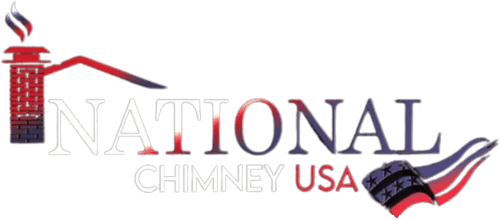
Chimney liners are an essential component of any chimney system. They play a crucial role in ensuring the safety of your home and family. Chimney liners are designed to protect the chimney walls from the high temperatures and corrosive byproducts of combustion. They also help to prevent the buildup of creosote, a highly flammable substance that can cause chimney fires.
Chimney fires are a serious threat to the safety of your home. They can start when creosote buildup in the chimney ignites, causing flames to shoot out of the top of the chimney. These fires can quickly spread to other parts of the house, causing extensive damage and putting your family at risk.
One of the main functions of a chimney liner is to prevent the buildup of creosote. The liner provides a smooth, non-combustible surface that helps to prevent creosote from sticking to the walls of the chimney. This reduces the risk of chimney fires and helps to keep your home safe.
Another important function of chimney liners is to protect the chimney walls from the high temperatures of combustion. When you burn wood or other fuels in your fireplace or stove, the temperatures can reach up to 2,000 degrees Fahrenheit. This can cause the chimney walls to crack or deteriorate over time. A chimney liner provides a barrier between the hot gases and the chimney walls, helping to prevent damage and prolonging the life of your chimney.
There are several types of chimney liners available, including clay tile, metal, and cast-in-place liners. Each type has its own advantages and disadvantages, and the best choice for your home will depend on a variety of factors, including the type of fuel you burn, the size and shape of your chimney, and your budget.
Clay tile liners are the most common type of chimney liner. They are relatively inexpensive and can last for many years with proper maintenance. However, they are not suitable for all types of fuels, and they can crack or break over time.
Metal liners are another popular option. They are made from stainless steel or aluminum and are highly durable and resistant to corrosion. They are also suitable for a wide range of fuels, including wood, gas, and oil. However, they can be more expensive than clay tile liners, and they may require professional installation.
Cast-in-place liners are a newer type of liner that is becoming increasingly popular. They are made from a special cement-like material that is poured into the chimney and then cured in place. This creates a seamless, highly durable liner that is resistant to corrosion and can last for many years. However, cast-in-place liners can be more expensive than other types of liners, and they require professional installation.
In conclusion, chimney liners are an essential component of any chimney system. They play a crucial role in ensuring the safety of your home and family by preventing chimney fires and protecting the chimney walls from damage. There are several types of chimney liners available, each with its own advantages and disadvantages. The best choice for your home will depend on a variety of factors, including the type of fuel you burn, the size and shape of your chimney, and your budget. If you are unsure which type of chimney liner is right for your home, it is always best to consult with a professional chimney sweep or installer.
Chimney liners are an essential component of any chimney system. They serve as a protective barrier between the inside of the chimney and the surrounding structure of the house. Chimney liners are designed to prevent heat transfer, protect the chimney walls from corrosion, and prevent the buildup of dangerous gases like carbon monoxide. However, over time, chimney liners can become damaged or deteriorated, which can compromise their effectiveness and safety. In this article, we will discuss the signs that indicate the need for chimney liner replacement.
One of the most common signs that your chimney liner needs to be replaced is the presence of cracks or gaps in the liner. These cracks and gaps can occur due to age, wear and tear, or exposure to extreme temperatures. When the liner is damaged, it can allow heat and gases to escape into the surrounding structure, which can lead to a fire or carbon monoxide poisoning. If you notice any cracks or gaps in your chimney liner, it is important to have it inspected by a professional chimney sweep.
Another sign that your chimney liner needs to be replaced is the presence of creosote buildup. Creosote is a highly flammable substance that can accumulate on the walls of the chimney over time. If the liner is damaged or deteriorated, it can allow creosote to seep into the surrounding structure, which can increase the risk of a chimney fire. If you notice a buildup of creosote in your chimney, it is important to have it cleaned and inspected by a professional chimney sweep.
A third sign that your chimney liner needs to be replaced is the presence of water damage. Water can seep into the chimney through cracks or gaps in the liner, which can cause the liner to deteriorate over time. If the liner is damaged or deteriorated, it can allow water to seep into the surrounding structure, which can lead to mold growth, structural damage, and other issues. If you notice any signs of water damage in your chimney, it is important to have it inspected by a professional chimney sweep.
In addition to these signs, there are other factors that can indicate the need for chimney liner replacement. For example, if your chimney is more than 50 years old, it may be time to replace the liner. Older chimneys were often built without liners, or with liners that are no longer up to code. If you have an older chimney, it is important to have it inspected by a professional chimney sweep to determine if the liner needs to be replaced.
Chimney liners play a critical role in ensuring the safety of your home. If you notice any signs that indicate the need for chimney liner replacement, it is important to have it inspected by a professional chimney sweep. By taking proactive steps to maintain your chimney liner, you can help prevent fires, carbon monoxide poisoning, and other safety hazards. So, if you haven’t had your chimney inspected recently, now is the time to do so. Your safety and peace of mind depend on it.
As a homeowner, it’s important to understand the importance of regular chimney cleaning and repair. Not only does it help maintain the overall health of your chimney, but it also plays a crucial role in ensuring the safety of your home. One of the key components of a chimney system is the chimney liner, which serves as a protective barrier between the flue gases and the surrounding structure. In this article, we’ll explore the benefits of regular chimney cleaning and repair for maintaining chimney liner safety.
First and foremost, a clean chimney is a safe chimney. Over time, creosote and other debris can build up inside the chimney, increasing the risk of a chimney fire. When these materials ignite, they can quickly spread to the surrounding structure, causing extensive damage and putting your family at risk. Regular chimney cleaning helps remove these dangerous materials, reducing the risk of a fire and ensuring that your chimney is functioning properly.
In addition to reducing the risk of a fire, regular chimney cleaning and repair also helps maintain the integrity of your chimney liner. Over time, the liner can become damaged or deteriorated, which can compromise its ability to protect your home from the heat and gases produced by your fireplace or stove. By having your chimney inspected and repaired on a regular basis, you can catch these issues early and prevent them from becoming more serious.
Another benefit of regular chimney cleaning and repair is improved efficiency. When your chimney is clogged with debris or damaged, it can impede the flow of air and gases, making it harder for your fireplace or stove to function properly. This can lead to poor combustion, reduced heat output, and increased energy costs. By keeping your chimney clean and well-maintained, you can ensure that your heating system is operating at peak efficiency, saving you money on your energy bills and reducing your carbon footprint.
Finally, regular chimney cleaning and repair can help extend the life of your chimney liner. Over time, exposure to heat, moisture, and other elements can cause the liner to deteriorate, leading to cracks, holes, and other damage. By having your chimney inspected and repaired on a regular basis, you can catch these issues early and prevent them from becoming more serious. This can help extend the life of your chimney liner, saving you money on costly repairs or replacement down the line.
In conclusion, regular chimney cleaning and repair is essential for maintaining the safety and efficiency of your chimney system. By keeping your chimney clean and well-maintained, you can reduce the risk of a chimney fire, improve the efficiency of your heating system, and extend the life of your chimney liner. So if you haven’t had your chimney inspected or cleaned in a while, now is the time to schedule an appointment with a professional chimney sweep. Your family’s safety and comfort depend on it!
